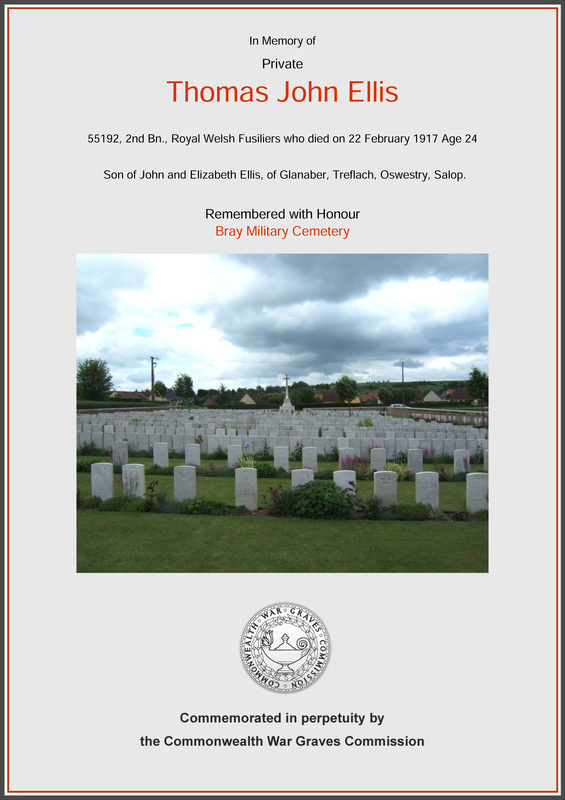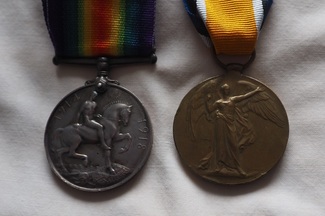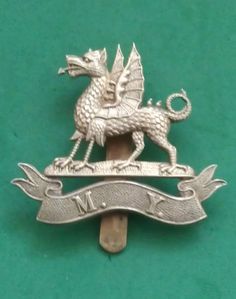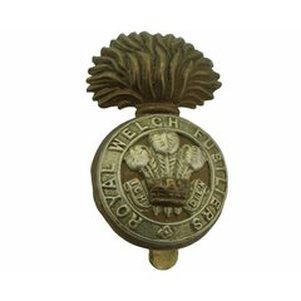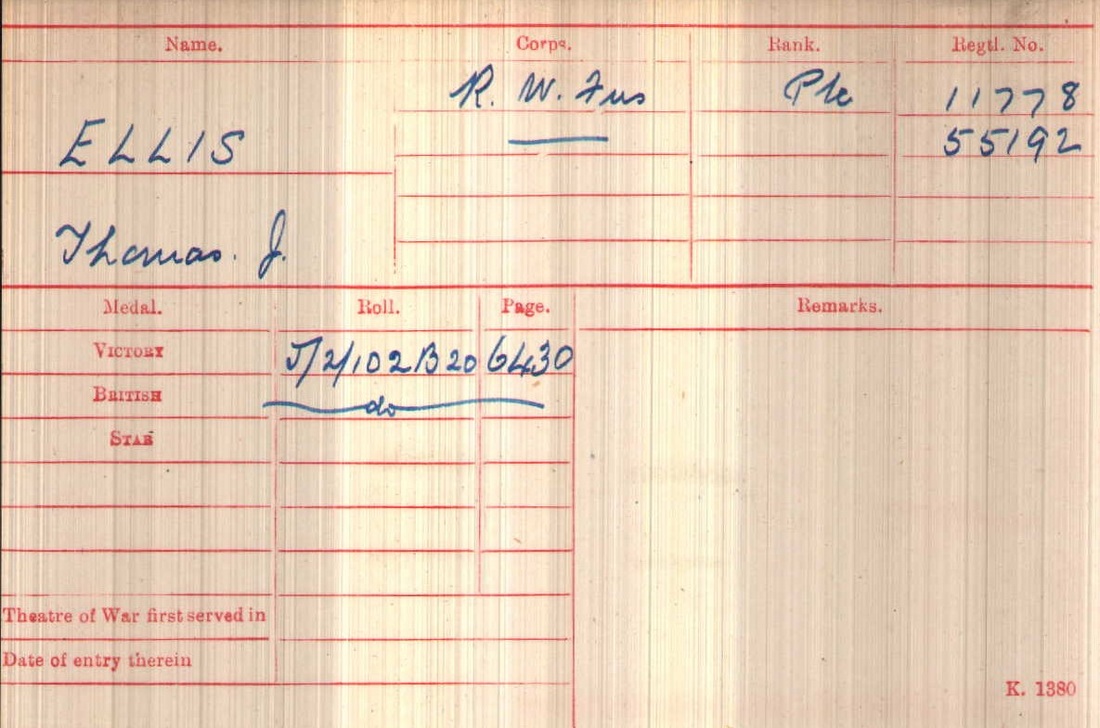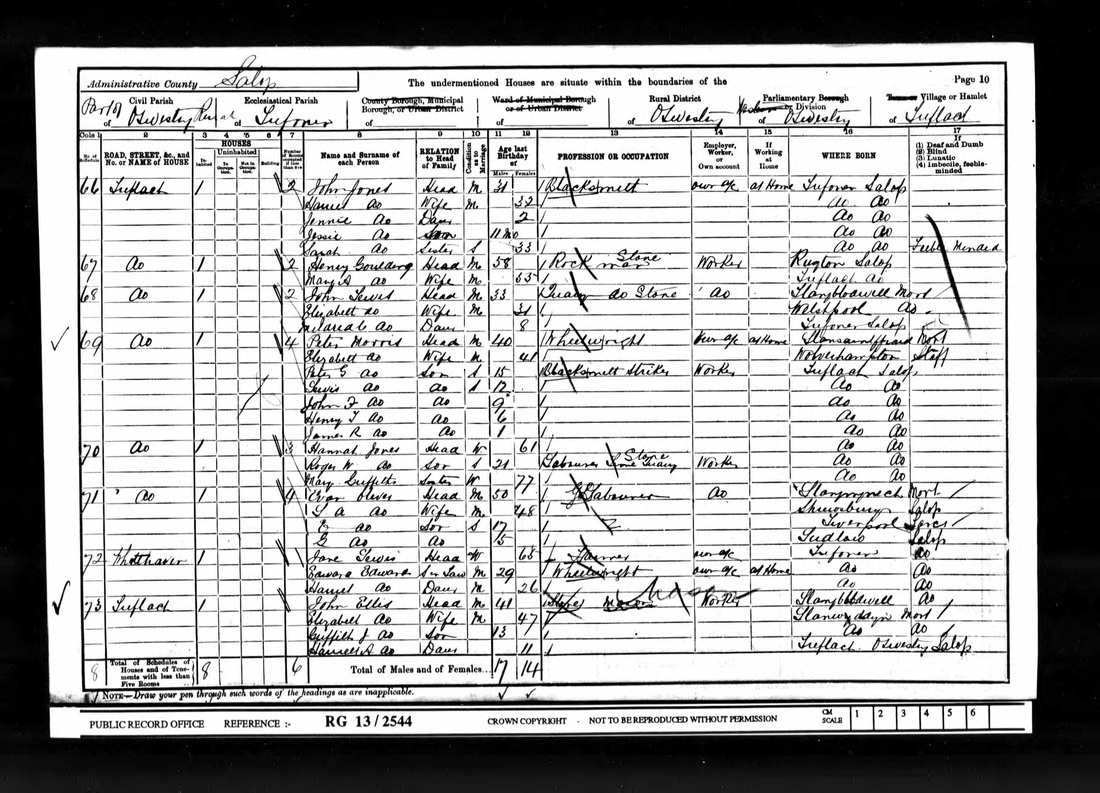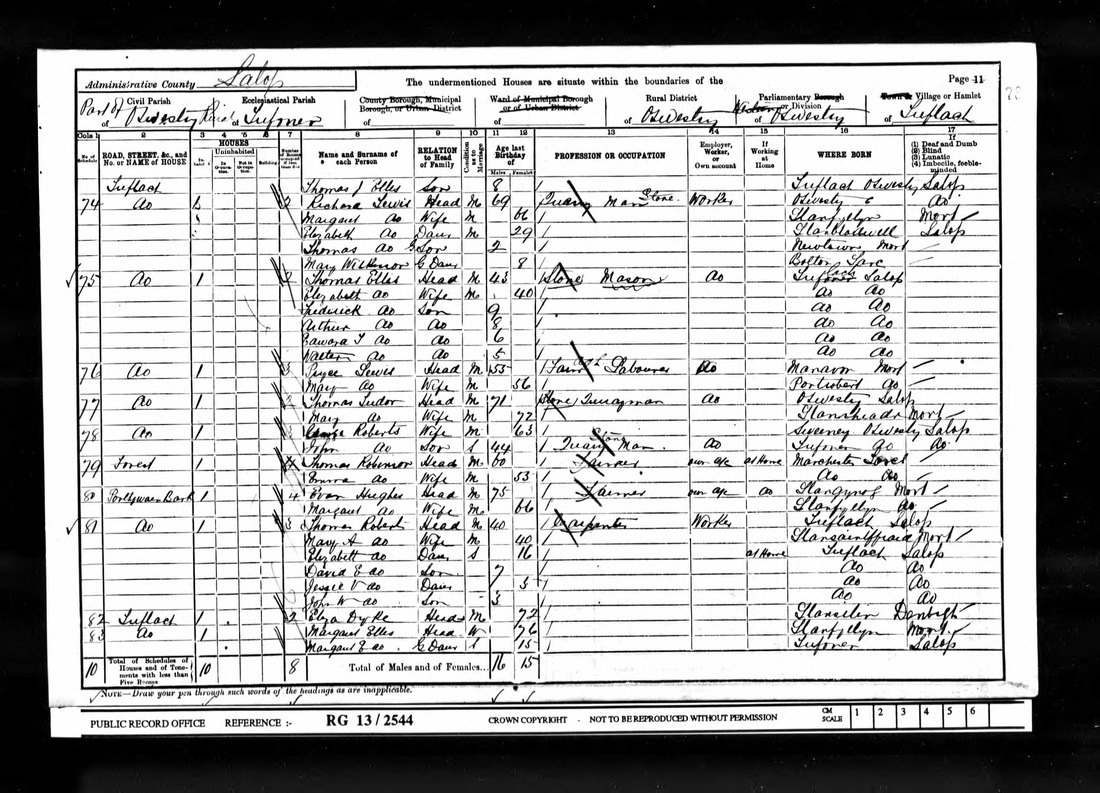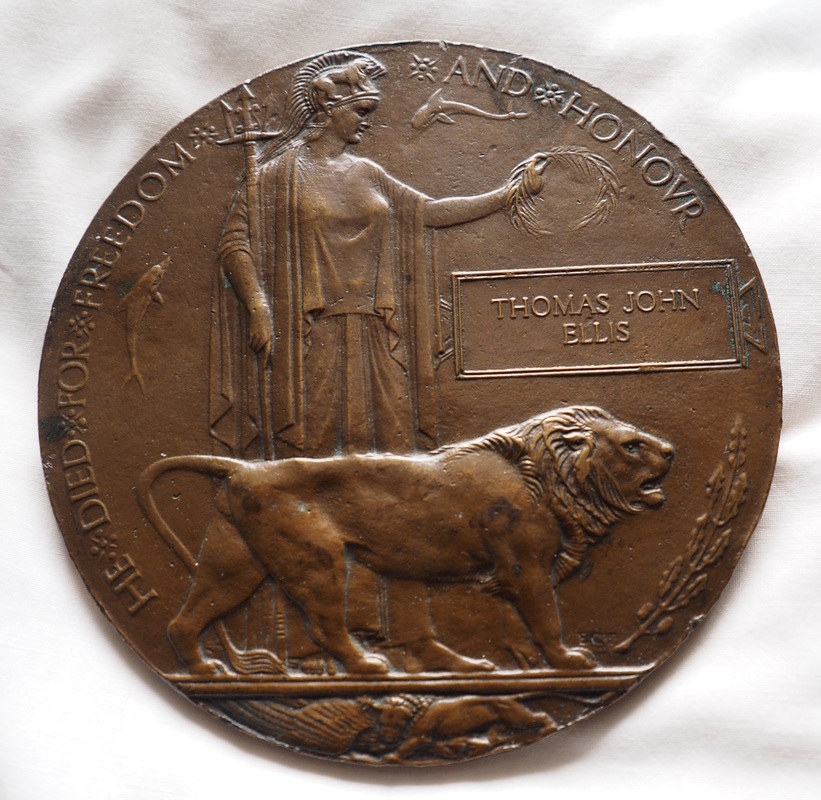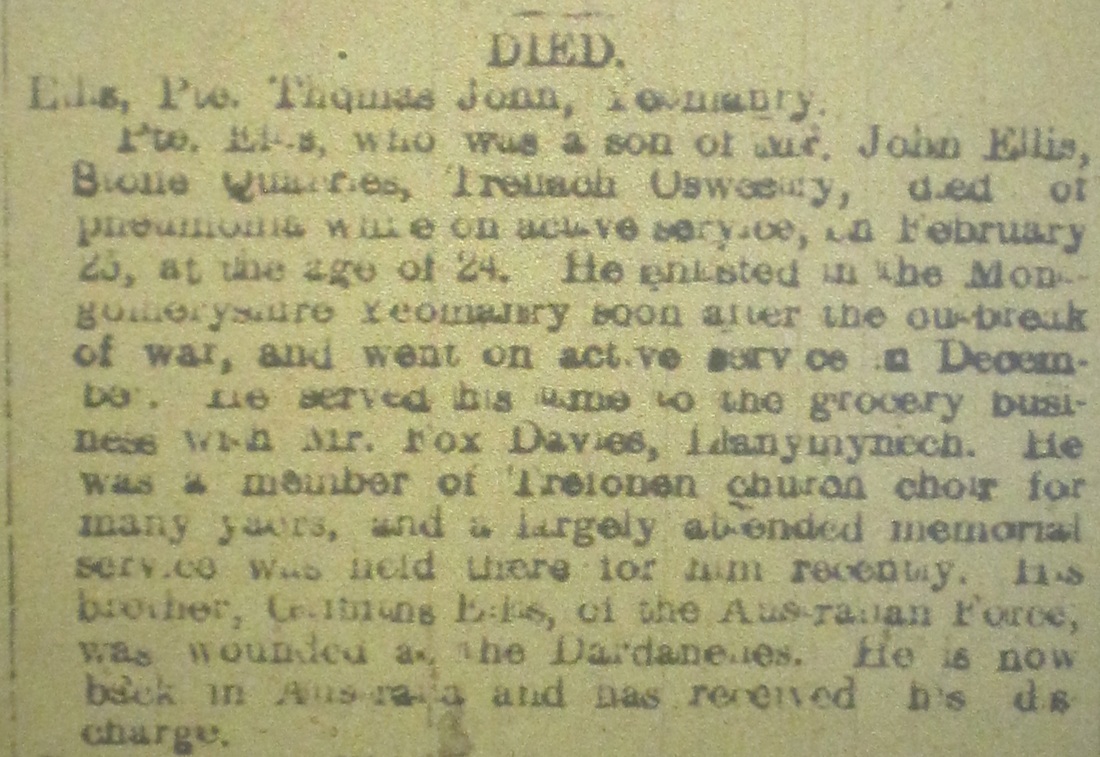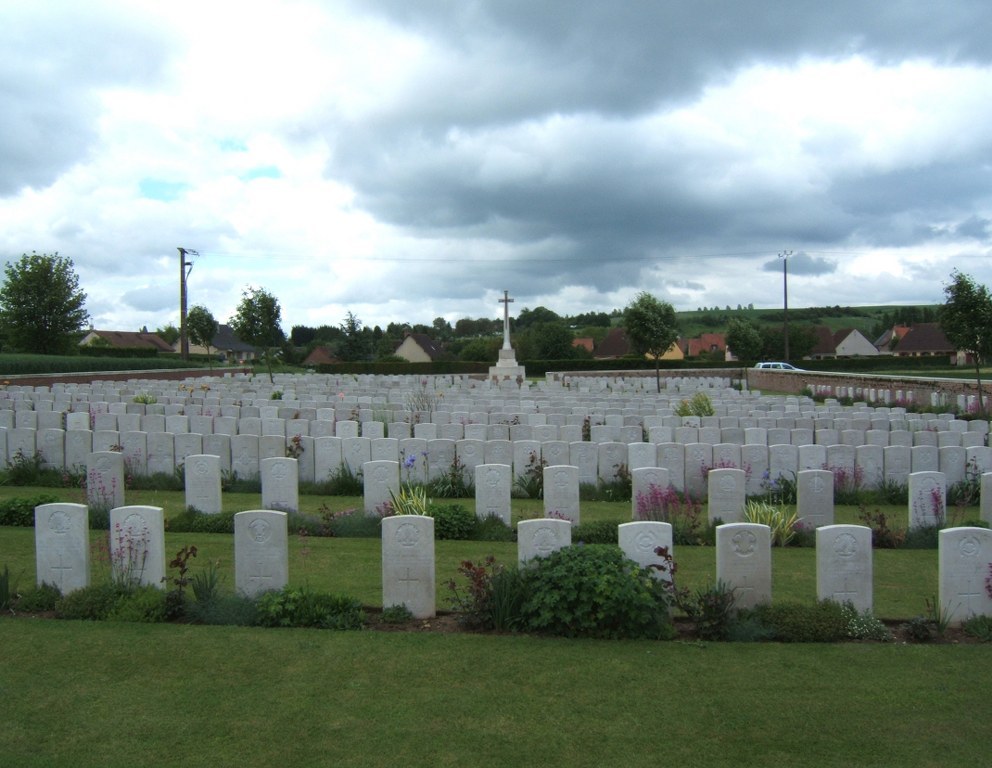Thomas John Ellis
|
Introduction
Thomas John Ellis was born in 1883 in Treflach, the youngest son of stone mason John and his wife Elizabeth. John and Elizabeth who's family had been re housed after the flooding of the valley near Llanwddyn to create Lake Vyrnwy had three children, another son called Griffith and a daughter called Harriet Ann. By 1911 Thomas John had started a career as a grocer and was living and working in Minsterley. The rest of the family continued to live at Glanaber in Treflach then a small cottage but now a bungalow with fantastic views across the valley towards the Berwyn Mountains. At some point prior to the outbreak of war Griffith the eldest son had emigrated to Australia. |
|
Military Record including Regimental and Battalion Information
Thomas John Ellis enlisted in the Montgomeryshire Yeomanry in Nov/Dec 1914. His first army number was 2789. Where he was based in the UK for training we cannot be sure but it is likely that he was in A squadron whose headquarters was in Llanfyllin but with a drill station in Trefonen. In Mid November 1916 he was transferred to the 4th Reserve Battalion Royal Welsh Fusiliers a territorial Unit with a new army number of 11778 and shortly afterwards on the 7th December 1916 he is posted to France. Here he is assigned to an Infantry Base Depot where on the 13th December he is posted again this time to a Regular Army Unit, the 2nd Battalion Royal Welsh Fusiliers as number 55192. Thomas had been in the front line for a relatively short period of time but the weather had been particularly cold and at times very snowy. The war diary for the time of Thomas's death records there was a lot of illness due to the cold weather and sadly Thomas died of pleurisy on the 22nd February 1917 according to his Soldiers Effects Register. His elder brother Griffith who had emigrated to Australia was also involved in World War 1. He had joined the Australian army and was badly wounded at the massacre at Gallipoli. |
Census data
|
Memorial and War Grave Information
Private Thomas John Ellis 55192 Royal Welsh Fusiliers is buried at Bray Military Cemetery, Bray-Sur-Somme, France. "He Giveth His Beloved Sleep" are the words that adorn his gravestone The newspaper cutting below is how the Border Counties Advertizer recorded news of his death on the 21st March 1917 |
Historical Information
The cemetery was begun in April 1916 by fighting units and field ambulances. In September 1916, the front line having been pushed further east, it was used by the XIV Corps Main Dressing Station and in 1917, the 5th, 38th and 48th Casualty Clearing Stations came forward and used it. In March 1918, the village and the cemetery fell into German hands, but were retaken by the 40th Australian Battalion on 24 August, and during the next few days the cemetery was used again.
After the Armistice graves were brought in to Plot I, Rows A1 and B1, and Plot II, Rows J and K, from the battlefields immediately north and south of the village and in 1924, further isolated graves (Plot III) were brought in.Bray Military Cemetery now contains 874 Commonwealth burials of the First World War, 127 of which are unidentified.
The cemetery was designed by Sir Reginald Blomfield.
click the link below for more information
www.cwgc.org/find-a-cemetery/cemetery/3500/BRAY%20MILITARY%20CEMETERY
The cemetery was begun in April 1916 by fighting units and field ambulances. In September 1916, the front line having been pushed further east, it was used by the XIV Corps Main Dressing Station and in 1917, the 5th, 38th and 48th Casualty Clearing Stations came forward and used it. In March 1918, the village and the cemetery fell into German hands, but were retaken by the 40th Australian Battalion on 24 August, and during the next few days the cemetery was used again.
After the Armistice graves were brought in to Plot I, Rows A1 and B1, and Plot II, Rows J and K, from the battlefields immediately north and south of the village and in 1924, further isolated graves (Plot III) were brought in.Bray Military Cemetery now contains 874 Commonwealth burials of the First World War, 127 of which are unidentified.
The cemetery was designed by Sir Reginald Blomfield.
click the link below for more information
www.cwgc.org/find-a-cemetery/cemetery/3500/BRAY%20MILITARY%20CEMETERY
